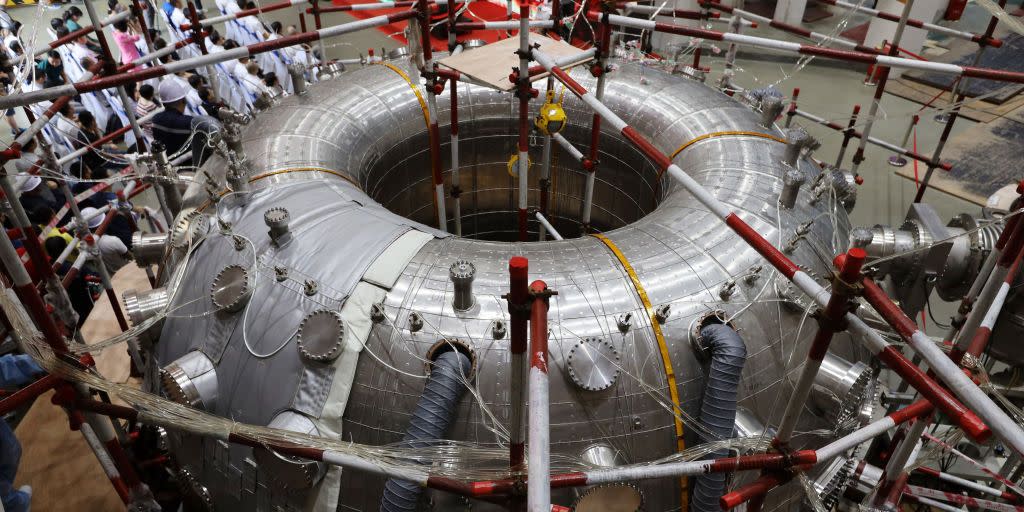Fusion Has an Efficiency Problem. This Science May Solve It.

New research explores what causes a wave fluke called a "chirp" in plasma tokamaks.
The same lab is studying ways to combat the effects of chirps, like radio waves.
The chirps are caused by wave frequency changes when particles spin out of the plasma center.
Researchers with the Princeton Plasma Physics Laboratory (PPPL) of the Department of Energy have released a new paper documenting a way to help enable nuclear fusion reactors. They describe the scientific reasons for a phenomenon within tokamak reactors called Alfvén mode chirping.
Let’s race through some terms here. A tokamak is the donut-shaped great hope of nuclear fusion. (Its cousin, the stellarator, has great potential, but is less developed so far.) Inside, a stream of unfathomably hot plasma—as hot as or even far hotter than our sun—is contained by a powerful magnetic field that must be totally effective for the reactor to stay at productive fusion temperatures.
Command and appreciate your world. Read the most in-depth science, tech, and nuclear news, and get unlimited access to Popular Mechanics—starting now.
There’s a constant push-pull between the stream of plasma and the magnetic field, and the nature of burning hot matter means the plasma is swirling and circulating even within the stream. This is where and why “chirping” occurs. Researcher Vinicius Duarte explains it in a PPPL statement:
"For any fusion device to work, you need to make sure that the highly energetic particles within it are very well confined within the plasma core. If those particles drift to the edge of the plasma, you can't sustain the steady-state burning plasma needed to make fusion-powered electricity a reality."
Think of the stream of plasma using an analogy that feels farfetched in socially distanced 2020. A stream of people is walking in unison, maybe out of a crowded commuter train and through a station. The fastest people are probably following each other in a narrow swath, and slower people are relegated to the side.
If one of the fast people kept traveling the exact same speed but made a sudden left turn, they’d disrupt all the other “lanes” of people who are continuing to move forward. And the pileup would slow the entire flow as people began to dodge around the obstacle almost immediately. (Fish and birds have a supernatural-seeming ability to flow around changing terrain together, but people are surprisingly good at it.)

This is the situation in a tokamak when chirping occurs. The most highly charged and powerful particles move out of their primary stream and cause harmonic disruption to the plasma around them. To study it, PPPL researchers ran simulations. “The simulations showed that chirping begins when fast-moving particles in the core interact with waves undulating through the plasma and spontaneously form clumps that migrate to the plasma edge,” they report.
PPPL is also exploring ways to use radio waves to help stabilize tokamaks, because radio waves have shown signs of diffusing the “clumps” that rapidly move to the edge and can disrupt the plasma flow or even damage the tokamak. In this newly published research, PPPL analyzes the chirps themselves in more depth, using the factors that cause chirping as a hook into continuing to try to solve the clumps. From the report:
“We find a mechanism that permits rapid repeated chirping with strong amplitude variation in each chirp. Each chirp is associated with an amplitude crash to low magnitude and local manipulation of the density gradients through a shift of mode phase.”
As the high-power particles bang around in the plasma stream, they interrupt and reduce the waves around them, changing the overall harmonics in the tokamak.
And for the first time, scientists have a simulation tool that they can use to walk through exactly what’s happening. “In a certain sense, it's like building a microscope,” researcher Roscoe White said.
You Might Also Like

